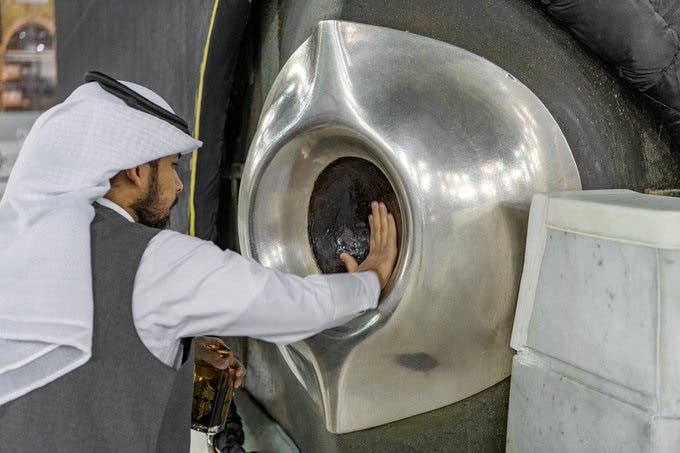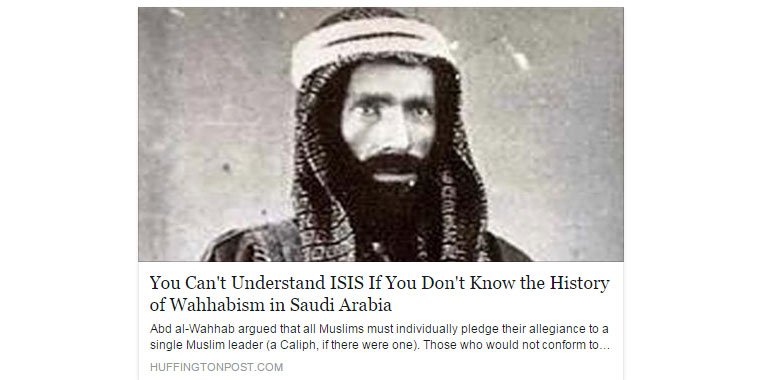
Yazīdī
Yazidis (Yezīdī, Azīdī, Zedī, or Izdī ) are found in Iraq, Syria, and Iran. It is a fusion of Zoroastrian, Manichaean, Jewish, Nestorian Christian and Islamic elements. They do not see themselves as descendent from Adam and maintain complete segregation from the rest of the population. They number fewer ythan 100,000 and worship a main divinity called Yazīdī is Malak Ṭāʾūs (“Peacock Angel”).
The Yazidis are an ethnically Kurdish religious community or an ethno-religious group indigenous to northern Mesopotamia. Yazidism is an ancient religion that is strictly endogamous. Yazidism is not linked to Zoroastrianism but rather to ancient Mesopotamian religions. Even though they are ethnically Kurdish, Yazidis are a distinct and independent religious community with their own unique culture. They live primarily in the Nineveh Province of Iraq. Additional communities in Armenia, Georgia, Turkey, Iran, and Syria exist as well. The number of Yazidis in their native lands has been in decline since the 1990s as a result of significant migration to Europe, especially to Germany.
The Yazidis are monotheists, believing in God as creator of the world, which he has placed under the care of seven holy beings or angels, the chief of whom is Melek Taus, the Peacock Angel. The Peacock Angel, as world-ruler, causes both good and bad to befall individuals, and this ambivalent character is reflected in myths of his own temporary fall from God’s favor, before his remorseful tears extinguished the fires of his hellish prison and he was reconciled with God.
This belief builds on Sufi mystical reflections on Iblis, who refused to prostrate to Adam despite God’s express command to do so. Because of this connection to the Sufi Iblis tradition, some followers of other monotheistic religions of the region equate the Peacock Angel with their own unredeemed evil spirit Satan, which has incited centuries of persecution of the Yazidis as “devil worshippers.” Persecution of Yazidis has continued in their home communities within the borders of modern Iraq, under fundamentalist Sunni Muslim revolutionaries.
Starting in August 2014, the Yazidis were targeted by the Islamic State of Iraq and the Levant in its campaign to “purify” Iraq and neighboring countries of non-Sunni and non-Islamic influences.
Origins
The Yazidi people speak Kurmanji Kurdish and adhere to the religion Yazidism, a religion rooted in Iranian religions blended with elements of pre-Islamic Mesopotamian religious traditions.
Although they speak mostly Kurdish, their ethnicity is obscure. Commentators identify the Yazidis as predominantly Kurds but they tend to regard themselves as distinct from Kurds. Many Yazidis say that Kurds are originally Yazidi who shifted culturally after they adopted Islam.
The United Nations recognizes the Yazidis as a distinct ethnic group. A report from Human Rights Watch (HRW), in 2009, declares that to incorporate disputed territories in northern Iraq – particularly the Nineveh province into the Kurdish region, KRG and Kurdish authorities have embarked on a two-pronged strategy of inducement and repression. The HRW report also criticizes heavy-handed tactics. According to report: “The goal of these tactics is to push Shabak and Yazidi communities to identify as ethnic Kurds. The Kurdish authorities are working hard to impose Kurdish identity on two of the most vulnerable minorities in Iraq, the Yazidis and the Shabaks.” Their principal holy site is in Lalish, northeast of Mosul. The Yazidis’ own name for themselves is Êzidî or, in some areas, Dasinî (the latter, strictly speaking, is a tribal name). Some scholars have derived the name Yazidi from Old Iranian yazata (divine being), and some Yazidis themselves believe that their name is derived from the word Yezdan or Êzid “God,” though the current consensus among Western academics support the widespread idea that it is a derivation from Umayyad Caliph Yazid I (Yazid bin Muawiyah), who is revered as Sultan Ezi. The Yazidis’ cultural practices are observed in Kurdish, and all speak Kurdish language. Kurdish language is the language of almost all the orally transmitted religious traditions of the Yazidis.
The Kitêba Cilwe “Book of Illumination,” which claims to be the words of Tawûsê Melek, and which presumably represents Yazidi belief, states that he allocates responsibilities, blessings and misfortunes as he sees fit and that it is not for the race of Adam to question him. Sheikh Adî believed that the spirit of Tawûsê Melek was the same as his own, perhaps as a reincarnation. He is reported to have said:
I was present when Adam was living in Paradise, and also when Nemrud threw Abraham in fire. I was present when God said to me: ‘You are the ruler and Lord on the Earth.’ God, the compassionate, gave me seven earths and throne of the heaven.
Yazidi accounts of creation differ from that of Judaism, Christianity, and Islam. They believe that God first created Tawûsê Melek from his own (God’s) illumination (Ronahî) and the other six archangels were created later. God ordered Tawûsê Melek not to bow to other beings. Then God created the other archangels and ordered them to bring him dust (Ax) from the Earth (Erd) and build the body of Adam. Then, God gave life to Adam from his own breath and instructed all archangels to bow to Adam. The archangels obeyed except for Tawûsê Melek. In answer to God, Tawûsê Melek replied, “How can I submit to another being! I am from your illumination while Adam is made of dust.” Then, God praised him and made him the leader of all angels and his deputy on the Earth. (This probably furthers what some see as a connection to the Islamic Shaytan, as according to the Qur’an, he too refused to bow to Adam at God’s command, though in this case it is seen as being a sign of Shaytan’s sinful pride.) Hence, the Yazidis believe that Tawûsê Melek is the representative of God on the face of the Earth and comes down to the Earth on the first Wednesday of Nisan (April). Yazidis hold that God created Tawûsê Melek on this day, and celebrate it as New Year’s Day. Yazidis argue that the order to bow to Adam was only a test for Tawûsê Melek, since if God commands anything then it must happen. In other words, God could have made him submit to Adam, but gave Tawûsê Melek the choice as a test. They believe that their respect and praise for Tawûsê Melek is a way to acknowledge his majestic and sublime nature. This idea is called “Knowledge of the Sublime” (Zanista Ciwaniyê). Şêx Adî has observed the story of Tawûsê Melek and believed in him.
One of the key creation beliefs held by Yazidis is that they are the descendants of Adam through his son Shehid bin Jer rather than Eve.
The Yazidi holy books are claimed to be the Kitêba Cilwe (Book of Revelation) and the Mishefa Reş (Black Book). However, scholars generally agree that the manuscripts of both books published in 1911 and 1913 were forgeries written by non-Yazidis in response to Western travelers’ and scholars’ interest in the Yazidi religion; the material in them is consistent with authentic Yazidi traditions, however. True texts of those names may have existed, but remain obscure. The real core texts of the religion that exist today are the hymns known as qawls; they have also been orally transmitted during most of their history, but are now being collected with the assent of the community, effectively transforming Yazidism into a scriptural religion. The qawls are full of cryptic allusions and usually need to be accompanied by oral ‘stories’ that explain their context.
A belief in the reincarnation of lesser Yazidi souls also exists. Like the Ahl-e Haqq, the Yazidis use the metaphor of a change of garment to describe the process, which they call kiras guhorîn in Kurmanji (changing the garment). Spiritual purification of the soul can be attained via continual reincarnation within the faith group, but it can also be halted by means of expulsion from the Yazidi community; this is the worst possible fate, since the soul’s spiritual progress halts and conversion back into the faith is impossible. Alongside this notion of continuous rebirth, Yazidi theology also includes descriptions of heaven and hell, with hell extinguished, and other traditions incorporating these ideas into a belief system that includes reincarnation.
Tawûsê Melek is often identified by Muslims and Christians with Shaitan (Satan). Yazidis, however, believe Tawûsê Melek is not a source of evil or wickedness. They consider him to be the leader of the archangels, not a fallen angel.
“The Yazidis of Kurdistan have been called many things, most notoriously ‘devil-worshippers,’ a term used both by unsympathetic neighbors and fascinated Westerners. This sensational epithet is not only deeply offensive to the Yazidis themselves, but quite simply wrong.” Non-Yazidis have associated Melek Taus with Shaitan (Islamic/Arab name) or Satan, but Yazidis find that offensive and do not actually mention that name.
The reason for the Yazidis’ reputation of being devil worshipers is connected to the other name of Melek Taus, Shaytan, the same name the Qur’an has for Satan.
Organization
Yazidi society is hierarchical. The secular leader is a hereditary emir or prince, whereas a chief sheikh heads the religious hierarchy. The Yazidis are strictly endogamous (the practice of marrying within a specific ethnic group, class, or social group); members of the three Yazidi castes, the murids, sheikhs and pirs, marry only within their group, marriage outside the caste is considered a sin punishable by death to restore lost honor. The current hereditary emir of the world’s Yazidi is Prince Tahseen Said.
The current religious leader of the Yazidis, the Baba Sheikh, is Khurto Hajji Ismail.
Religious Practices
Prayers
Yazidis have five daily prayers:
- Nivêja berîspêdê (the Dawn Prayer);
- Nivêja rojhilatinê (the Sunrise Prayer);
- Nivêja nîvro (the Noon Prayer);
- Nivêja êvarî (the Afternoon Prayer);
- Nivêja rojavabûnê (the Sunset Prayer).
However, most Yezidis observe only two of these, the sunrise and sunset prayers.
Worshipers should turn their face toward the sun, and for the noon prayer, they should face toward Laliş (Lalish is a small mountain valley village situated in northern Iraq).
Under The Ottoman Empire
A large Yazidi community existed in Syria, but they declined due to persecution by the Ottoman Empire. Several punitive expeditions were organized against the Yazidis by the Ottoman governors (Wāli) of Diyarbakir, Mosul and Baghdad. The objective of these persecutions was the forced conversion of Yazidis to the Sunni Hanafi Islam of the Ottoman Empire.
Yazidi
513 – 013
https://discerning-Islam.org
Last Update: 04/2021




